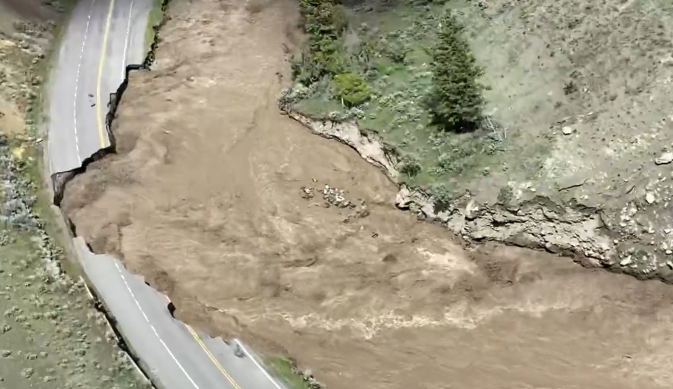
Extreme deluges are growing more and more common.
Yellowstone National Park superintendent Cam Sholly said on Monday that record flooding has necessitated the closure of all inbound traffic into the iconic park for at least a couple of days (though northern parts of the park will be closed for a long time). Extreme rains triggered rock and mudslides, which destroyed large swathes of a crucial road leading to the park’s North Entrance. Yellowstone’s helicopter manager captured footage of the raging Gardner River and the washed-out road from a park helicopter, which you can see in the footage the park tweeted below.
The park called the rains and flooding “unprecedented.”
UPDATE: Jun. 15, 2022, 9:12 a.m. EDT Yellowstone National Park announced on June 14 that the “Northern portion of Yellowstone National Park [is] likely to remain closed for a substantial length of time due to severely damaged, impacted infrastructure.” As you can see in the footage above, the road damage is certainly significant.
This heavy rain originated over the Pacific Ocean as a potent atmospheric river, which is a formidable band of moisture (sometimes dubbed a “river in the sky”) that streams over the Pacific Ocean and into the Western U.S. By the time it reached the Yellowstone region, the dynamic weather system’s severe thunderstorms doused the land. Crucially, the rain, and consequent flooding, from atmospheric rivers is growing worse as the climate continuously warms.
That’s because a warmer atmosphere naturally holds more water. This boosts the odds of potent storms — like thunderstorms, mid-latitude cyclones, atmospheric rivers, or hurricanes — deluging places with heavier downpours.
“Once you have more moisture in the air, you have a larger bucket you can empty,” Andreas Prein, a scientist who researches weather extremes at the National Center for Atmospheric Research, told Mashable last year. This can result in pummeling downpours. “You can release more water in a shorter amount of time — there’s very little doubt about that,” Prein said.
Surging rivers are often a consequence of these potent rains. On June 13, the Yellowstone River smashed its record peak height, rising by over six feet in just 24 hours. The historic floods even washed a family’s home into the river.
Meanwhile, the raging Gardner River (seen above) destroyed the road into the community of Gardiner, a popular stop for park visitors. The town is now suddenly cut off from food deliveries and essential services.
